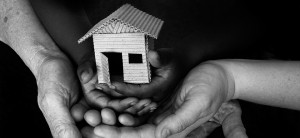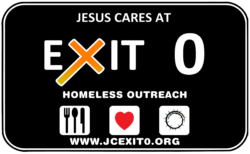About Homelessness

Homelessness occurs when people or households are unable to acquire and/or maintain housing they can afford.
The Big Picture
While circumstances can vary, the main reason people experience homelessness is because they cannot find housing they can afford. It is the scarcity of affordable housing in the United States, particularly in more urban areas where homelessness is more prevalent, that is behind their inability to acquire or maintain housing.
By the numbers for 2023:
- There are 653,100 people experiencing homelessness on any given night in the United States in 2023.
- Experiences of homelessness increased nationwide across all household types. Between 2022 and 2023, the number of people experiencing homelessness increased by 12 percent, or roughly 70,650 more people.
- On a single night in 2023, more than 34,700 people under the age of 25 experienced homelessness on their own as “unaccompanied youth
- More than one in fve people experiencing homelessness on a single night in 2023 was age 55 or older. More than 98,000 people experiencing homelessness were aged 55 to 64, and almost 39,700 people were over age 64. Nearly half of adults age 55 or older (46%) were experiencing unsheltered
homelessness in places not meant for human habitation. - In 2023, 35,574 veterans were experiencing homelessness—22 of every 10,000 veterans in the United States. The number of veterans experiencing homelessness increased by seven percent (2,445 more veterans) between 2022 and 2023. The increase included a 14 percent rise in the number of unsheltered veterans (1,943 more veterans) and a three percent increase in veterans experiencing sheltered homelessness (502 more veterans). Despite increases in experiences of veteran homelessness between 2022 and 2023, the number of veterans experiencing homelessness is 52 percent lower than it was in 2009, the baseline year for reporting veterans experiencing homelessness in the AHAR
- About one-third (31%) of all individuals experiencing homelessness reported having experienced chronic patterns of homelessness, or 143,105 people. This is the highest number of individuals experiencing chronic patterns of homelessness counted in the PIT count since these data were frst reported in 2007. Two thirds of individuals experiencing chronic patterns of homelessness, or almost 93,000 people, were counted in unsheltered locations. This is also the highest number recorded
- The largest numerical increase in people experiencing homelessness was among people who identify as Hispanic or Latin, increasing by 28 percent or 39,106 people between 2022 and 2023. People who identify as Hispanic or Latin made up 55 percent of the total increase in people experiencing homelessness between 2023 and 2023. Most of this increase (33,772 people) was for people experiencing sheltered homelessness.
- The national inventory of beds for people currently experiencing homelessness increased by seven percent between 2022 and 2023. The largest increase in year-round inventory for people currently experiencing homelessness occurred in emergency shelters (28,760 more beds)
Focus Areas
There is four specific groups experiencing homelessness:
Families
Homeless families are similar to other poor families.
Typically, families become homeless as a result of some unforeseen financial crisis – a medical emergency, a car accident, a death in the family – that prevents them from being able to hold on to housing.
Most homeless families are able to bounce back from homelessness quickly, with relatively little public assistance. Usually, homeless families require rent assistance, housing placement services, job assistance, and other short-term, one-time services before being able to return to independence and stability.
Youth
Young people often become homeless due to family conflict, including divorce, neglect, or abuse. A large majority of young people experience short-term homelessness, returning back home or to family/friends.
Youth homelessness presents a particular challenge for several reasons, including the fact that there is very little definitive data on the population, as this group often doesn’t interact with standard homeless assistance programs or government agencies. Moreover, the solutions that have been identified for homelessness in general are often not applicable to minors (who are, for example, ineligible to rent an apartment). These special challenges mean that solutions to youth homelessness require innovation.
Veterans
Veterans often become homeless due to war-related disabilities. For a variety of reasons – physical disability, mental anguish, post-traumatic stress, etc. – many veterans find readjusting to civilian life difficult. Difficulties readjusting can give rise to dangerous behaviors, including addiction, abuse, and violence, which, coupled with the difficulties, can lead to homelessness.
Preventive measures, including job placement services, medical services, housing assistance, and the like, can mitigate the risk of veterans experiencing homelessness.
Chronic Homelessness
Chronic homelessness is often the public face of homelessness. “Chronic” has a specific definition, involving either long-term and/or repeated bouts of homelessness coupled with disability (physical or mental). People experiencing chronic homelessness often end up living in shelters and consume a plurality of the homeless assistance system’s resources.
It’s a common misconception that this group represents the majority of the homelessness population. Rather, they account for just fewer than 16 percent of the entire homeless population.
Fortunately, there has been significant progress to address chronic homelessness in the last decade. The number of individuals experiencing chronic homelessness has declined by 19.3 percent since 2007.



